-
Kelpies

The kelpie is a Scottish water creature, who tricks humans into joining them in the water to drown and eat them.
Category: Aquatic
History
Kelpies are water spirits known for drowning their victims after enticing them to follow them. This is usually in the form of a horse or person, convincing the person to follow them into deeper water. Kelpies are carnivorous creatures that will eat their victims after drowning them.
They are more often found in rivers, and are generally depicted as male. They are often associated with the fae.
Traits and Behavior
Kelpies are born when someone drowns in a large body of water. They are not technically the ghost of the drowned person, but an amalgamation of the energy of the death itself and the water. When born, they are small, and usually appear as a small, jelly like creature that scavenges on the bottom of the water. As it feeds, it grows, until it is able to shapeshift.
Adult kelpies are shapeshifters but favor the form of a horse (or other riding animals, depending on their region) or a person. Whatever form they take, they are always black in color, and their eyes are either yellow or gold. They often glow. Their hair is always dripping wet, and usually has weeds or water plants stuck in it.
Kelpie skin is naturally sticky, and can even suck things into it somewhat, which the kelpie uses to trap their prey once they make contact. There does seem to be some control over this, as the kelpie doesn’t have things constantly stuck to their skin. The effect is so strong, however, that the only survivors have had to cut off the body part attached to the kelpie.
This skin texture is due to their body not truly being made of muscle and flesh, but instead the jelly substance that their younger form appears in. They can shift and squeeze into any opening, no matter the size.
Kelpies live in the body of water they are born in, and only travel away if necessary to hunt. More often, they will just expand their hunting territory to account for their growing need for food. They have no issues being out of the water, but live in underwater caves or crevices and have fully functional gills. Kelpies are carnivorous, and almost exclusively hunt humans. If there is a lack of food, they may hunt other animals, supernatural creatures, or even other kelpies.
To hunt, smaller kelpies may take the form of a small animal or child, appearing to drown to lure others into the water to help. At which point they will drown and kill their would-be rescuer.
Adult kelpies will often walk along the shores of their home and entice people to attempt to ride it, even kneeling on the ground to assist if anyone approaches. If someone takes up the bait, they will immediately run into the water and drown their rider. Pookas often use similar methods to lure riders, but pooka are not hunting and usually will allow their rider to leave if they were able to hold on.
Kelpies may also take the form of a human, luring humans to join them alone near their shores to drown them. They usually use seduction to do so, showing no preference for any particular gender or even age. Kelpies themselves have no gender, though they usually appear in male forms when they shapeshift.
Kelpies are technically immortal, not aging once they reach adulthood, but they can be killed by various means, and at which point they change back to their jelly appearance, and will dissolve over time into sludgy pond water.
Weaknesses
If you can get a saddle and bridle on a kelpie, they will not be able to drown you, and can be ridden safely. However, once the bridle is removed they will immediately attempt to kill the one that rode them and any of their loved ones, so this is not recommended.
Kelpies can supposedly be killed by a silver bullet or blessed weapon.
-
Pooka
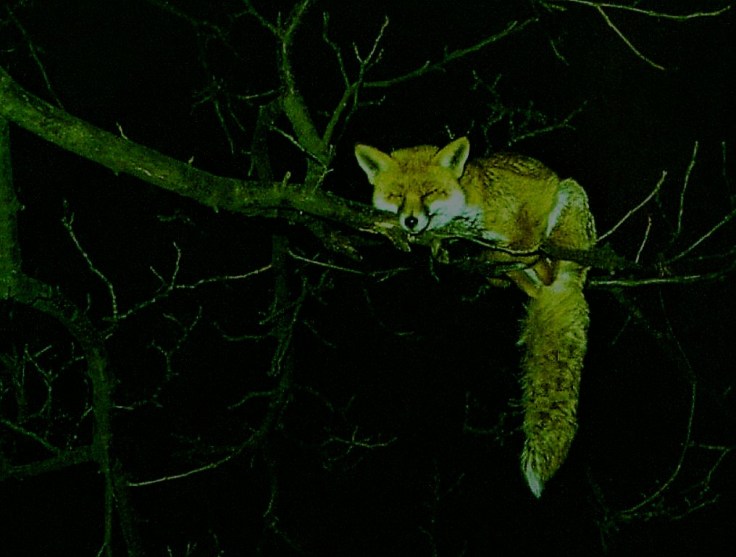
Originally native to Ireland and the British Isles, the pooka (also spelled phouka, or púca) is a mischievous shapeshifting spirit tat has been known to both help or hinder anyone who comes across it.
Category: Fae/Shapeshifter
History
The pooka in myth is a trickster, who could be dangerous but is more often depicted as mischievous. Over-ripened food in the fields was intentionally left out to feed the trickster and keep it from pranking the community. Some old harvest festivals include leaving food in the fields, and the pooks is associated with some Samhein traditions.
The character Puck from a Midsummer Night’s Dream is believed to be a pooka.
Traits and Behavior
Pooka are shapeshifters that can be born into any shape depending on the parent’s current form, and there is no known limit to how long they can hold a form or even if there is a limitation on their form at all. However, there are some common characteristics that can be used to identify them in most forms.
Pookas will always retain their natural coloring in any form. While they can come in a variety of colors, they are most often black or white, with occasional markings that will also translate between forms. These markings can be placed anywhere on the body. Their eyes can be any color, but will have the pupils of a goat regardless of their form, and they are often iridescent. They have naturally great night vision, and are primarily nocturnal, but not exclusively.
While pooka can shift into almost any form (there is speculation about a maximum size or weight, but this has not been substantiated), they often default to a few forms: a horse, owl, or fox. In horse form, the pooka has been known to lure people to try to ride it, then going for a wild race across the land, even into other realms and dimensions, before returning the rider to where they started. They may give a rider a reward for surviving the ride, but be wary, as kelpies often use this trick as well, but they will always drown their victim instead. The reward isn’t likely to be worth the risk in this case.
Pooka are solitary, usually choosing to live on the outskirts of settlements but only making contact on occasion. When they make contact, they love pranks and to enact punishments on anyone who they deem to have committed some slight. Slights can be anything from a spoken insult, to damaging the environment (or worse, the pooka’s home, no matter if the person was aware of it), or stealing anything of the pooka’s, such as the remainder of the harvest left in the fields. Their pranks can be malicious and even deadly; there are some tales of pooka intentionally hunting down certain people in the woods alone, and it is possible that they eat them afterwards.
They prefer the woods, but will also live in any available wilderness. Due to their preferences for berries, they are commonly found in areas where they grow. Their nests are built in either caves or tall trees, and may hold small trinkets or belongings.
Pooka are fae, and therefore often live in the fae realm instead of the human one. When in the human realm, they seek out half-rotted food left over from the harvest, often grain or berries, to eat. However, they will happily accept fresh milk, honey and bread if offered. Giving them food is a sure way of winning their favor, or at least avoiding their pranks, but offering anything more substantial is a risky venture. Some will take such offerings as an insult, others will happily accept and even offer a boon as repayment. The best course of action is to avoid making any such offerings, but if you are insistent on doing so, asking the pooka if you can be permitted to make such a gift is the least dangerous way of doing so.
Pooka, when not attempting to trick a person with their shapeshifting, will often be happy to chat with anyone that offers a pleasant conversation, and can speak regardless of the form they are in. They value intelligence and love riddles, and may offer advice or information in exchange for a good riddle or story.
How, exactly, pooka courting goes is entirely unknown. No infant or young pooka has ever been confirmed to have been seen. Current speculation is that they are born and raised in the fae realm, and only leave once they reach adulthood. Even fae communities in the human realm have no reported pooka children or apparent couples. There is speculation that pooka are born via some other means, possibly asexual reproduction or through some magical means that renders childhood moot. No pooka, when asked, has ever offered any information on this topic. They seem to find the topic amusing, rather than offensive, and tend to immediately ask about how humans court and are born instead.
Pooka do not have any obvious magical abilities, but are very intelligent, and offer excellent advice when they are inclined.
Weaknesses
As with all fae, pooka are weak to iron, and cannot stand its direct touch. In tales of pooka taking people for wild rides (while in the shape of a horse, generally), iron spurs are the best weapon. They will likely not approach at all if one is carrying an iron weapon or key.
-
Basilisks
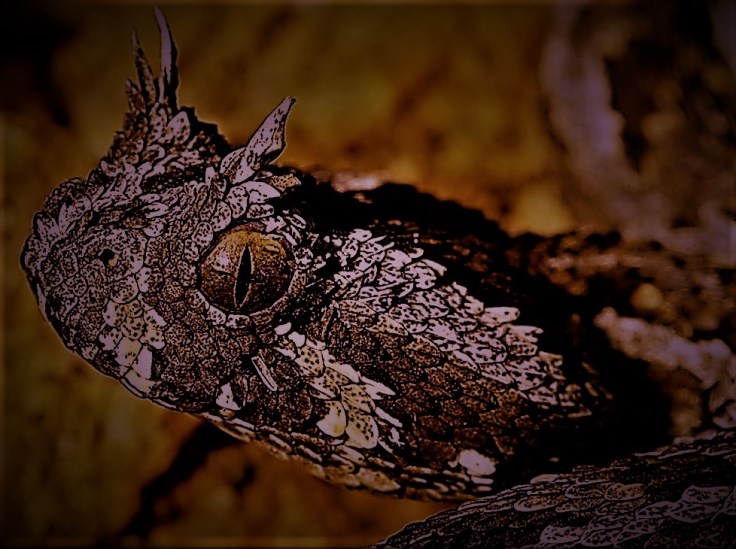
Originating in ancient Greece, the basilisk is the king of serpents and snakes. Its’ venom is incredibly lethal, but it is best known for its’ gaze, which can kill anyone that makes direct eye contact.
Category: Grasslands
History
First written about by Pliny the Elder, the basilisk as believed to be a rather small snake, only about a foot in length, with incredibly potent venom that dripped continuously from its fangs and would kill any plants or animals that came across it on the ground even hours later. It was believed to be hunted by weasels.
Traits and Behavior
Despite Pliny’s claims, basilisks are large snakes, reaching upwards of twenty feet when fully grown, and may indeed never stop growing as they age. Their scales are unique, taking on a dull, dusty color to camouflage amongst grasslands during the day, but becoming an iridescent blue-green at night. They are capable of hunting in both the day and night, but are generally nocturnal. Their eyes can range widely in color, favoring browns and reds, though the full spectrum is not known, as no witnesses can make direct eye contact, and film/photography immediately degrades. They have a large spiked crest over their eyes that has given them the nickname ‘King of Serpents.’ Despite the title, basilisks are genderless, and other snakes largely avoid them.
Basilisks are hatched by a chicken from the egg of a snake or toad, which can take months to hatch. The reverse, a chicken egg hatched by a toad or snake, will produce a cockatrice, a bird-like creature with similar attributes. The basilisk as an infant will not harm its adoptive parent, but as they age have been known to see the chicken parent as a potential food source. They do not linger after birth, as they are almost immediately independent and capable of hunting small prey for themselves.
Basilisks at hatching are only a few inches long, and do not gain their iridescent adult scales for their first three sheddings. The basilisk sheds its skin once a year for their first 5-8 years of age, then shed progressively less over time. With each shedding the basilisk grows in length, and by the time they have reached 10 years of age are generally 3-5 feet long.
Basilisks do not develop their full killing gaze until they have reached adulthood at 8 years of age. Prior to this, their gaze can numb or temporarily paralyze prey, though larger animals are more immune. Younger basilisks use this to hunt, catching small insects, rodents and lizards as they grow. Older basilisks more typically hunt without this gaze, as they prefer living food.
Their gaze at adulthood will kill any living thing that makes eye contact with them, there are no known exceptions. The death will be instant, and to all examinations will appear to be without cause. Most basilisk deaths are put down to heart failure. Beings that are already dead, such as banshees, ghosts or vampires, have demonstrated a temporary paralysis or weakness when exposed, and some have been destroyed altogether, whatever magic or energy that bound them to sentience dispersed entirely.
Basilisk venom develops in potency around the same time as their gaze, but it is not lethal except in extremely large doses. Instead, the venom has a paralyzing effect, ranging from a few minutes to hours depending on dosage. Adult basilisks use this to subdue their prey before eating.
As basilisks continue to grow, they need to seek out larger and larger prey, often targeting hooved animal herds. They are ambush hunters, using their camouflaged scales to hide in tall grasses and between hills. Between meals they sleep a great deal, digging shallow burrows in the ground to rest in. Their scales are hard to penetrate and few species are willing to risk catching their eye for a meal, so they do not always bother seeking out shelter to rest. They are cold blooded, so their habitat is purely in warmer zones and they rarely travel unless they are seeking food. Even so, they show a strong preference for the area they were born in and often go back as soon as there is food again available there.
Basilisks can swim, and choose to hunt for fish instead of land prey. They cannot breathe underwater, but can hold it for several minutes, and they can move rapidly in the water.
Basilisks rarely seek out humans as prey, regardless of some legends, and generally see humans as a potential threat. They will attack if provoked, but will only seek out humans for food if there is nothing else available. Some research in this direction suggests they don’t care for the taste. Humans meanwhile have been known to hunt basilisks, partially for the safety of their herds and communities, and in part because basilisk scales are highly valuable, as they make nearly impenetrable armor and shields.
Basilisks have decent night vision, but primarily rely on infrared vision that shows them heat pockets surrounding living beings. During the day they use their sense of smell, which can pick up their prey from great distances. This enables them to hunt without the use of their eyes in most cases. Their gaze is primarily for defense, allowing the basilisk to retreat without being pursued.
As basilisks do not breed together to be born, they do not lay eggs or present any kind of mating behavior. They are capable of smelling another basilisk at great distances and will avoid entering each others territory when possible. Basilisks can be killed by another basilisks gaze, so fights between them are generally over with quickly. Basilisks largely exist in solitude, largely, but have been seen resting amongst other species between meals and during their resting periods.
Basilisks get slower with age, as their larger size takes up more energy than they can supply, and spend longer and longer periods of time sleeping as they get older. Eventually, they will simply be unable to support their own size and pass away. Their bodies are often harvested for scales and fangs, as their venom is a natural paralytic and extremely sought after, but the ground on which they died will be toxic for some time. Eventually, as their bones break down, the ground will once again support life, and often a number of toads and snakes can be found living in the remains. Some speculate they are somehow born from the bones themselves, but this has never been proven.
Weaknesses
Basilisk scales are extremely dense, but can be pierced through with enough force. An easier method is to take out their eyes or stab through the much thinner flesh of the inner mouth. Basilisks are generally immune to poisons, being venomous themselves, but a high enough dose can at least slow them down if they ingest it. However, as they prefer living prey over dead, it is extremely difficult to introduce poison into their system. They are more vulnerable when sleeping, as they do not have particularly sharp hearing.
-
Grim
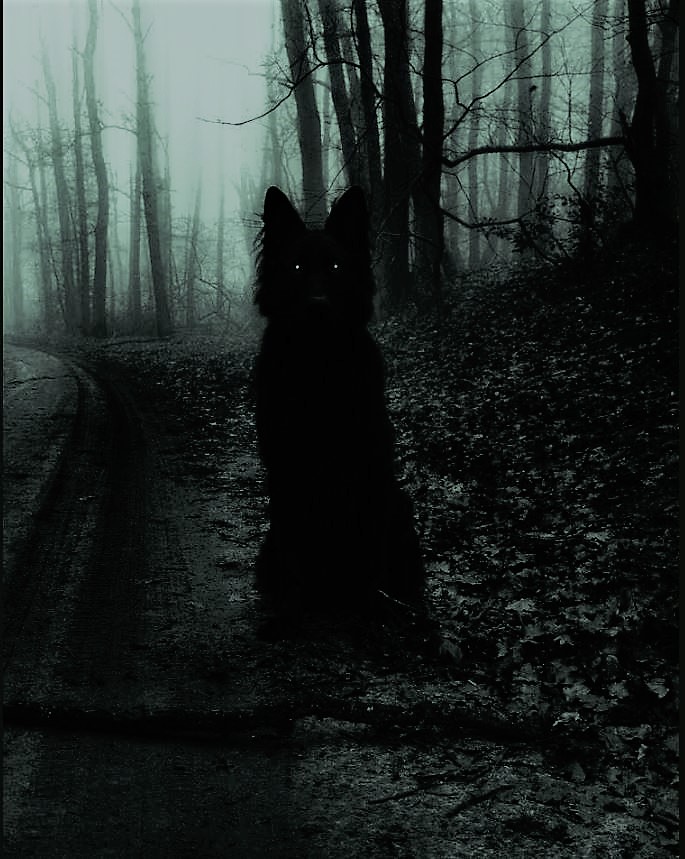
The Grim, or church grim, is the specter of a large black dog that, if seen, is an omen of death. They originate from British legend.
Category: Apparition
History
The Grim is associated with both English and Scandinavian folklore, though in Scandinavian stories the Grim is not always a dog, often appearing as a lamb or crow, though other animals have also been seen. The belief at the time was that the first body buried in a graveyard would rise as protector of the souls buried there. An animal was usually buried first to ensure a human soul wasn’t trapped serving at the graveyard permanently.
Traits and Behavior
A Grim is a spirit that takes the form of a black animal, usually a dog or canine. They are, as legends portray, the first creature to die in a graveyard. If the first death is humanoid, they will not form a Grim, but appear to be reborn as another creature. Not every graveyard will birth a Grim, and not all Grims are born in a traditional graveyard; any burial site can theoretically generate a spirit.
They will always be black furred, scaled or feathered, regardless of the coloring that they had prior to death. A Grim will be larger than their previous species, but not abnormally so; some speculation is that they are literally covered in grave dirt, and that this is what lends them their dark coloring and additional size. Their eyes will glow, usually white or yellow, and they have excellent night vision. They are almost entirely nocturnal, but have been seen during the day during storms or in fogbanks.
The Grim lives within the graveyard they are buried in, and will protect it from all perceived threats, which can vary dramatically. The one consistent thing is that the Grim will not bother or approach someone mourning at a gravesite. They will chase off anyone that is trying to damage or disturb the graves. Should any ghosts be present in the graveyard (even if they were not buried there), the Grim will also guard them, and will fiercely fight anyone attempting an exorcism. They do not generally interfere in genuine attempts to assist a spirit in moving on, so their behavior seems to be based on intention.
To defend its’ territory and charges, the Grim can cause physical harm, usually attacking as any animal would, or calling living animals to harass a trespasser. This is why dogs and crows are particularly popular choices to try to create a Grim. They are reported to cause fear and paranoia to anyone near them as well.
The Grim can kill someone to protect their graveyard, but ironically if they do so, they will protect both the body and spirit of that person if the death occurs in the graveyard. This will remain true until the body is buried elsewhere.
The Grim is a death omen, though they do not intentionally cause death. The Grim will be visible to anyone who will soon enter its’ protection; essentially, anyone who will be buried in its’ graveyard. Unlike some other omens, the sighting of the Grim is a guaranteed death, as only the shadow of death allows the sighting in the first place. Even those with the Sight or other supernatural abilities to sense spirits and magic cannot see the Grim itself. They may perceive something is present, but an actual sighting is not possible.
This does mean that if the Grim will kill someone to protect their graveyard, that person can usually see them right before death. This fact could be why the Grim is believed to cause the death of anyone that sees it, though it isn’t uncommon for death omens in general to be blamed for the deaths they predict.
Grim spirits do not appear to communicate with each other or anyone else. How aware they are of others or even if they know they are dead is very unclear, as is their general level of intelligence. They appear smarter than average members of their species, but this is difficult to confirm, as they cannot truly be interacted with except by those who will soon die.
To tell a Grim from a normal animal, there are a few ways to tell. The first, nobody else will be able to see it. If you are alone, another method is to approach the Grim directly. The Grim will not appear to ever get closer or further away, but will not otherwise react.
A report written by someone who saw the Grim (written a few days before they died) indicated that the Grim got closer and closer as their death approached; the first sightings were from a great distance, only just visible. By the last few days it had gotten close enough to see its eyes. The report indicated that it did not appear to breathe, and while often visible in places it should not be able to get to, it never went indoors. It also never responded to them, no matter how close it got, and was never even looking at them directly. The writer speculated the Grim was in fact there to protect their soul prior to death, and found some comfort in that. Please note that it is unknown if this is accurate to the Grim in general, this one in particular, or merely wishful thinking.
Some believe that whoever sees the Grim is escorted away by the Grim. As no-one can see them, this is something that cannot be verified.
Weaknesses
The Grim cannot, or at least will not, go out during the day unless light is obscured by fog, storm clouds or possibly smoke. It is equally possible they are always around and just cannot be seen in bright light. Although it is not known if the sight of the Grim guarantees death, or if only those who cannot escape their fate can see the Grim. Therefore, avoiding seeing the Grim may not accomplish anything except not knowing how much time is left.
-
Loch Ness Monster
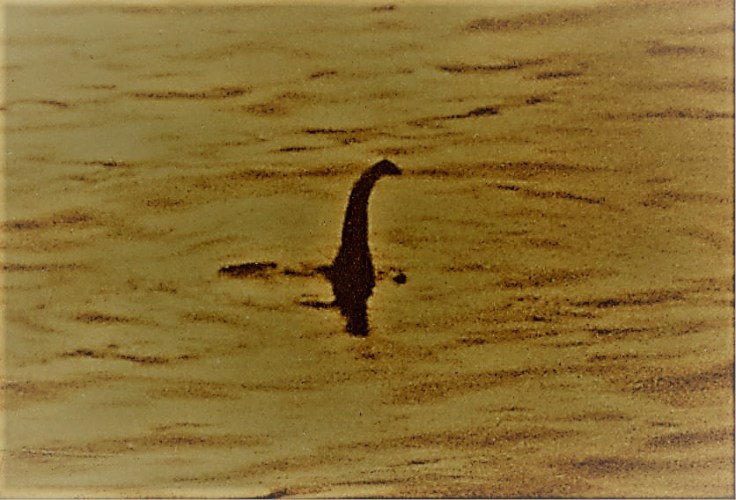
The Loch Ness monster (or Nessie) is, as the name suggests, a creature that lives in the depths of the Loch Ness, a large body of water in Scotland. Believed to potentially be an ancient dinosaur species, Nessie has lived in Loch Ness for centuries
Category: Aquatic
History
The earliest stories about Nessie date back to the 6th century, depicting a generic ‘water beast’ that was repelled by the sign of the cross. More specific stories come from the 19th century, wherein numerous travelers and locals alike saw a strange beast in the water. The variations of what, exactly, Nessie looked like were broad. Some depictions were of a sea serpent or fish-like creature, others of a four legged beast with large claws and teeth. Eventually the image of Nessie settled on a four legged creature, that was either a reptile or amphibian, capable of swimming at incredible speeds. Most depictions are from a great distance.
Traits and Behavior
The Loch Ness monster is a creature related to sea serpents, but is of the fresh water variety and is therefore incredibly rare due to the limited number of water bodies large enough to house it, and due to human encroachment on their territories. Nessie may in fact be the last of their kind, as no more than one of these creatures have ever been seen at any time. Due to the rarity of freshwater varieties, some information has been gleaned from their salt water relatives.
This species is entirely aquatic, living exclusively in large bodies of water and rarely surfacing. Freshwater serpents made their home in large, deep bodies of mostly still water. It is believed some previously made their home in the Great Lakes of the United States, though none have been seen for sure in centuries.
Serpents are quadrupeds, with four flippers and a long tail used for fast propulsion through the water. They are large, over 8 feet from nose to tail and very strong, capable of dragging down an entire ship alone. Their scales are typically green or occasionally grey, with darker scales along their back and hump, and thick, capable of tolerating the damage from a boat propeller. They are carnivorous, with a jaw full of sharp teeth that regrow constantly. As they are aquatic, their diet is exclusively made up of fish, though they have been known to occasionally sink ships. Despite this habit, they rarely eat any humans or animals they drown.
Their habit of sinking ships seems more tied to their extreme dislike of the noise a ship brings, even prior to the invention of modern engines. Ships and watercraft that are not targeted nearly as often as ones in motion. It is possibly the noise of humans themselves, or perhaps a defensive mechanism against human fishing habits, as they rarely go after swimmers.
Females are larger than males by a noticeable degree, at least two feet longer on average, and have a second set of teeth behind the first, intended to break down food smaller to feed to their young. There are no visible color variations, but it is speculated that they may have a UV light component, which has not at this time been recorded. Nessie, the only one witnessed in Loch Ness specifically, appears to be a female.
Female serpents can lay eggs with or without a male partner, the latter of which will only produce female young. The eggs can survive almost indefinitely without hatching, waiting for the correct circumstances. The Loch Ness criteria for this is unknown, but as Nessie is only ever seen alone, it appears that at this time this has not occurred. It is also possible tat Nessie has laid no eggs, or is herself infertile. If so, she may be the last of her kind, as she is the only known sighting in the last century in any freshwater region.
Nessie is most active at dawn and dusk, rarely seen during the day or at night. During these times she is likely sleeping or possibly hunting, and may only surface at those times to avoid humans. Based on her size and seawater relatives, she should be able to dive to depths of 600 feet. Several searches and scans of the loch have been done to search for her, but have never been successful, suggesting she is either very talented at avoiding humans searches, or may possess some other camouflage abilities that have not been recorded. Speculated options have been a literal camouflage similar to the octopus, or being able to adjust her body temperature to match that of the water around her.
Nessie’s species of sea serpent is believed to live for 500-600 years. Nessie herself has been observed far beyond this timeframe, with early sightings in the 6th century, so it is likely that there have been a number of Nessie ancestors in the loch.
Weaknesses
Nessie, unable to swim through the River Ness and reach any other territory, and very likely the lack of her species, is only a threat if you go out on the water and disturb her. We have little information on how durable she herself is, but based on her salt-water relatives, nothing short of a whaling harpoon will cause enough damage to kill her.
However, unless she lays eggs, or Loch Ness reaches the opportune temperature or chemical composition, killing Nessie would be destroying the entire species. Which should be avoided if at all possible, and as there very few deaths within the Loch due to Nessie, should be no issue.
-
Banshees
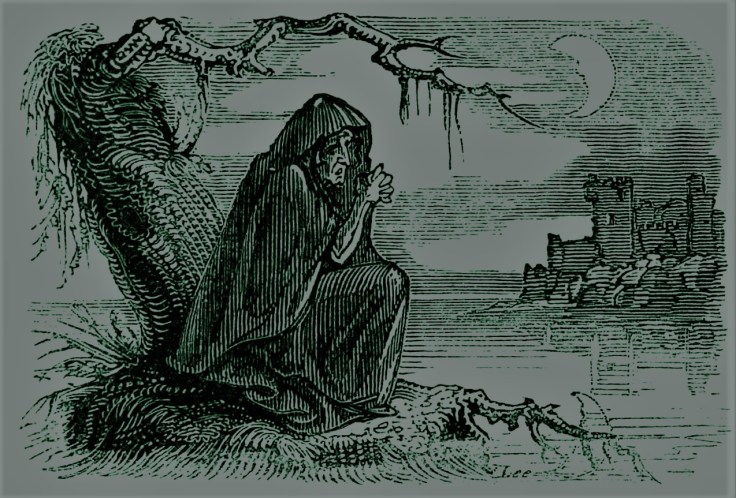
While having the appearance of a human ghost, the banshee is a nocturnal creature that wails and weeps in places that have, or will soon, been the site of death or tragedy.
Category: Nocturnal
History
Originating in Ireland, the banshee as a creature of myth is depicted as a female ghoulish apparition, usually wearing white or grey and having long, unkempt hair. They are always crying or wailing when seen, and can be depicted as either a mourning spirit, often a family member that had already passed away, or a screaming ghost whose cries will kill the listener.
They always appear before a death, though stories vary whether they cause it or are simply an omen. In either case, the banshee wailing would always be the first warning of a death in the family, no matter if the family member in question was miles away or just in the next room.
Traits and Behavior
Banshees are humanoid creatures that have the appearance of a human woman. Depending on their origin, they can appear at varying ages, though the most common forms are that of a young woman or an old crone. They haunt or follow one family their entire lives, crying or screaming to warn of impending disasters.
The banshee is born of very specific circumstances. They will be born, in a word, to a family that is facing overwhelming tragedy, usually the death of a loved one, and will have the appearance of a family member. Not a specific one, but if their face is compared to the other family members there will be a noticeable resemblance. Banshees consider the human family their own, and try to protect them or at least warn them when they are about to face a great loss. While extremely rare, the banshee’s wailing can save someone if they heed the warning.
Banshees greatly resemble ghosts; they are translucent or invisible, and float rather than walk. They will be dressed in either a long dress or cloak that hides their lower body, and may not even have feet. They will not make eye contact even if directly confronted, and rarely seem to be aware of anyone trying to actually communicate with them, continuing to sing, cry or wail without pause. They only speak to others when they are not currently foretelling a death, and are difficult to find in those cases.
A banshee can feasibly live forever, if the family they are a part of remains a unit. They only disappear if the family dies, or their descendants are scattered to the point they are no longer a family unit. Banshees are known to last generations, but can fade and return without warning, and can go decades without an appearance, even if there have been deaths or tragedies in the family. What events trigger a banshee warning is not known, but broad data suggests they only wail when the death will be a shock or a particularly devastating blow, such as a beloved parent, or an unexpected accident.
Banshees that appear as young women are usually from a family that has lost a child, or a family member young enough that their death was a shock. A banshee with an older appearance comes from a family that has lost a cornerstone of the family; a matriarch, or a beloved aunt or uncle. Banshees that primarily weep are generally warning of tragedies that cannot be prevented and therefore are warning the family of the impending grief. Screaming banshees are more indicative of an event that could be prevented. Banshees can change their behavior and appearance apparently depending on circumstances, though as they rarely are visible when not actively mourning (and therefore the only times they can be spoken to clearly), it is unknown if any changes to the banshee are intentional or instinctive. They may appear to be holding or washing bloody clothing, which will belong to the soon to be deceased person.
Banshees, when they can be communicated with, speak minimally and do not seem completely aware of their surroundings. They cannot be fully seen, only appearing as a vague haze, and generally live in small, unused spaces of the family home or main house, if the family does not all live together. They see themselves as part of their families and will happily speak about them, as much as they are able, and remember every member of the family and events they were present for. If asked about a family member who has died, they will revert to their mourning appearance and begin crying or wailing, and will do so for several hours.
Banshees do not need to eat or sleep, though they primarily rest when not predicting events for the family. After the predicted death or event, they will continue to mourn with the family for some time, gradually becoming fainter and quieter until they have reverted to their hazy appearance, at which point they will return to their cubby to rest again.
Weaknesses
Banshees do not cause bad events, despite their unfortunate association with them, and so removing one is not a solution. They cannot be exorcised or killed, and will follow their family should they move. They only dissipate when their family does.
The best thing to do in face of a banshees warning is to prepare for a dark event, and attempt to follow their warnings. Watch them to see if they are carrying anything, and if so try to identify who the item belongs to. Contact any and all family members to check in, and if possible cancel any dangerous upcoming plans, or visit a hospital if anything seems off, just to be certain. In many cases, there is nothing that can be done. Make sure one’s will and last wishes are known to the family, and try to resolve anything that can be resolved, in case that is your last conversation. The banshee only wants her family to survive the hurt, or to prevent it if she can. Your best defense is to heed her warnings.
-
Iron Flowers

Only found in the deepest of underground mines, iron flowers are a rare and beautiful supernatural plant.
Category: Mountainous
History
Iron flowers are often sought out in romantic poetry, as a symbolic gesture of affection to the recipient. They are difficult to find, and incredibly delicate if they are picked, so the few that survive the trip are both incredibly rare and valuable.
Traits
Iron flowers are a flowering vine that only grows in complete darkness, and to thrive needs a large volume of metal to thrive. Therefore, they are usually found growing in mines, if they are found at all.
The blossoms are five petalled flowers that can be as large as an adult human’s hand. The entire plant has an outer coating of metal, drawn from the ground they grow in, and their coloration will match their metal make-up. Iron flowers are the best known, as iron is the most sturdy metal they can grow from, but copper, silver and gold flowers have also been found.
Once picked, the interior plant material will slowly wither and die away, leaving only the extremely thin outer metal shell. This material is delicate and can break at the slightest touch. The best method of keeping them in one piece is to set the flower in resin once the plant matter has died away, before it has a chance to start crumbling. Outside of this or some other method of containing it, they naturally crumble away after a few weeks at most.
The plants will die immediately if exposed to any natural light, and tend to wilt in any artificial light, so they are rarely found in good shape by humans. Some species of cave dwellers cultivate them, but even these will be wild gardens; the plants are not overly tolerant of being touched even while still growing.
Weaknesses
The flowers are not poisonous, and typically depend on their secluded home for their only defense. If touched, the flowers tend to wilt or die, and if cut they will slowly crumble unless they are preserved. In other words, they are pretty and incredibly delicate, and not remotely dangerous.
-
Goblins
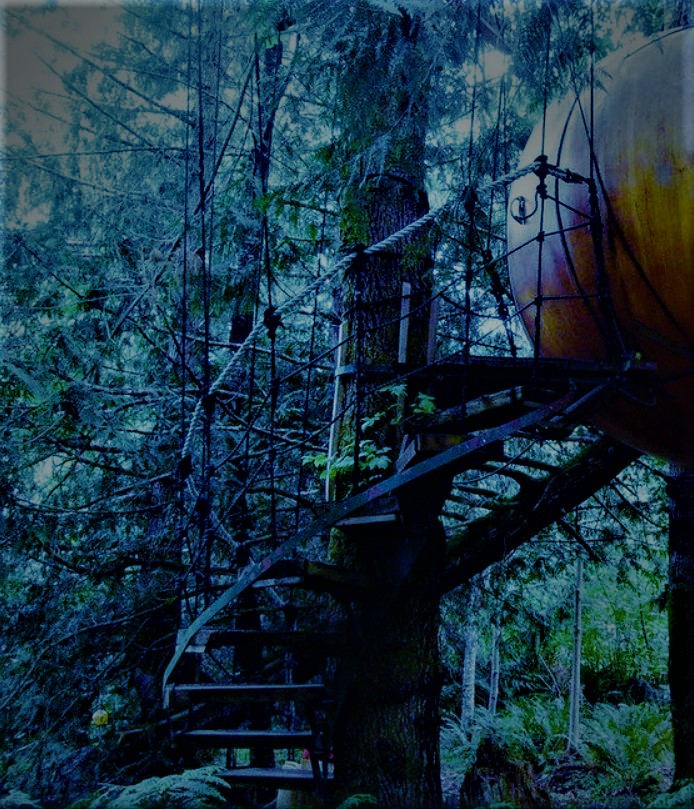
Goblins are mischievous, humanoid creatures that are commonly found in Europe in forests and mountainous regions. There are similar species found all over the world.
Category: Forest/Mountainous, Nocturnal
History
Goblins in history are depicted as either mischievous or outright evil depending on the source material. In their kinder depictions, they play pranks or serve comeuppance to humans that have committed some slight. Their pranks are usually relatively harmless, but can be permanent. In their less kind depictions, goblins often are an active threat to anyone walking along alone, particularly at night. One depiction of them, redcaps, dye their hats in the blood of fallen humans, often in battlefields, and will die if they cannot keep the hat freshly soaked in blood.
The term is often used to describe kobolds, gremlins, pixies, brownies and other types of fae, which may account for the wide variety of depictions. In modern times, they are the inspiration for the Smurfs, a much gentler depiction than their usual depictions.
Traits and Behavior
Goblins are humanoid, usually reaching 3-4 feet in height by adulthood. Their skin is often green in tone, though this can range from brown-green tones to more vivid shades. They have pointed ears, and their eyes can be almost any color; they are nocturnal and have incredible night vision. Some, but not all, have additional sets of eyes, which can see various other light spectrums.
Goblins have unusually long fingers, used primarily for climbing, as they live primarily in forests or mountain regions and spend a great deal of time perched in tall branches or cliff faces. Their toes are almost as long as their fingers.
Goblins can have a wide variety of teeth; some have a mouth of canines, they may have underbites or overbites, some may have flat teeth similar to humans, and a very small number have fangs that can produce venom. They are technically omnivores, but their diet is usually exclusively meat and mushrooms, with occasional other foods if available. While they are happy to scavenge for meat and will eat anything from squirrels to snakes, they are very fond of mushrooms and will cultivate them carefully to eat them all times of year. Their stomachs can handle almost anything, and frequently eat poisonous plants.
Goblins are remarkable engineers, though their structures rarely make sense to anyone besides them. Their towns and cities are often built into sides of cliffs or into tree tops, hanging high above the ground and connected by various walkways and rope paths. These towns are usually completely impossible to navigate unless one is a goblin or a similarly skilled climber. The only thing in their towns that is at ground level is a large bonfire area for gatherings. Goblins can eat raw meat (and often prefer it), so rarely use this fire for cooking. Goblins love the light and smoke of a fire and it is purely for entertainment. They do brew alcohol from mushrooms and drink lavishly at these fires; one should never consume that alcohol, as it is deadly to most other species.
Goblin societies are complex, with leadership being a large number of goblins that change often, and appear to be any age, gender or apparent occupation. What, exactly, their leadership does or is even called is unclear, as goblins generally do what they like, and many appear to not know who is currently considered leadership. They all seem perfectly content with this, and often state they find human government systems odd and unclear instead.
Some goblins implied that being chosen to be a leader of any kind is involuntary, and the goblin in question may not have been told.
Goblins are incredibly fond of bright colors, interesting textures, and anything shiny, and often collect trash and litter they find to decorate their homes and clothing. They may wear numerous layers of human scraps, goblin woven clothing and even moss. Rather than make any attempt to camouflage, they depend on making a great deal of noise and distraction to keep any humans away from them. While not actively interested in humans outside of their interesting garbage, they will prank or even attack any humans or other species that get too close to their town.
Goblins are vindictive if slighted, and will pursue a grudge until they either complete whatever elaborate revenge they have decided to inflict, the human manages to settle the grudge in another way, or the person moved too far away to pursue. Even if they die, a goblin may continue with their relatives or children.
What a slight will be to a goblin can vary wildly, from finding or seeking out goblin towns, littering in the forest (unless the trash was interesting), insulting the goblins, or interfering with another prank. To get a goblin to stop their pranking, you can offer them a gift of interesting items (they are particularly fond of small shiny items such as buttons, but find coins boring), or begin to prank them instead. They take that as a compliment to their skills, and enjoy the back and forth. It can be difficult to tell if the pranks have gone from ill-intentioned to fun, but the best sign is pranks going from potentially dangerous to merely unusual, such as your entire car being painted lime green instead of finding faerie rings in your garden made from poisonous mushrooms. Tread carefully regardless, a prank war with a goblin can easily go back to them trying to cause you harm, and you may never know why.
Goblins do not have a solid concept of gender, and only have two sets of pronouns. The first refers to all goblins of any age or body type, the second specifically to a goblin who is currently pregnant. When the baby goblins are born, the parent will revert to the first pronouns again. Baby goblins are raised entirely communally, and will not know the name of the one that bore them.
Goblins as infants are brought up and cared for by volunteers until they are capable of talking and walking, around the age of three, at which point they are fed and watched but largely left alone. During the day they pick a small burrow in the trees, or simply sneak into an adult’s home, to sleep. They are considered adults when they have built their own home, no matter how structurally sound, so some will be adults after only a few years, and others may be decades old. Goblins can live to be as old as 500, but on average reach 350 years of age.
When a goblin dies, they are buried and above them, their favorite breed of mushrooms is grown.
Weaknesses
They create hoards similar to dragons, but they have no specific kind of item, and will get rid of items if they are no longer interesting. Giving them something to go into that collection can distract them from a grudge. As mentioned, returning fire with other pranks is another way to calm their mischief. Goblins are rarely interested in direct conflict, so they do not need to be directly confronted.
-
Wishing Wells
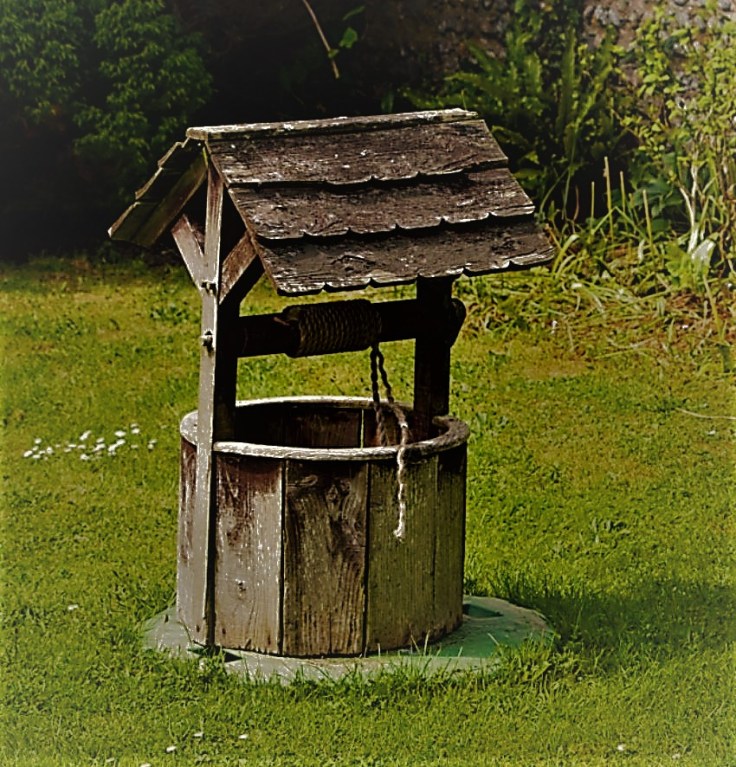
Wishing wells are semi-sentient supernatural objects that serve to provide small wishes and desires to wishers in exchange for a minor price.
Category: Object
History
Wishing wells have a long history in faerie tales as a catalyst for stories. Most often, they play in stories for women wishing for love or children; in these stories they often can talk, in order to explain to the wisher the terms of the deal. They are often replaced by witches or wise women in later tales.
Traits and Behavior
Wishing wells develop naturally, growing within wells that were dug and maintained long enough to be seen as a landmark for any local residents. They do not appear in every well, but it is unclear exactly what is needed to cause the complete change. Some theories include the need for prior belief in the well’s power, or when a powerful wish/ offered price is completed in the well’s vicinity.
Wishing wells can vary in design and appearance, but will always have certain traits. They will have a roof or lid that will always cover the well even if nobody is currently maintaining it. They may be aged or have plant life growing over them, but will never be degraded to the point of falling apart. While they are usually seen as important landmarks in the towns they are near, they are rarely if ever still used for water. Despite this, there will also be a proper bucket and rope available.
The ground around a wishing well will be clear and flat, though it can be overgrown with flowers. No trees or larger plants will grow too closely, and animals will generally avoid the clearings they develop in.
The main trait of a wishing well is, obviously, the aspect of the wish. Wishing wells operate on simple logic: one may make a wish and provide an offering to add to their request. Should their offering be sufficient, their wish will be granted. If their wish is larger than their price, there is no effect. The person wishing faces no repercussions for not giving the necessary price, no matter how short they were in the price. The tradition of tossing coins into a well or fountain stems from these offerings, but the offering does not have to be a coin or even currency. Items of sentimental value are often worth more, but stolen items are worth nothing.
There is no known limit on the wish itself, only on the amount needed to complete it. In theory, if one was able to provide something of enough value, any wish could be granted. There is also no limit to the number of wishes one can make, so long as every wish was paid for. However, there are consequences for making many wishes, which can be dire.
First, wishes made to the well will be granted literally, so phrasing must be both clear and with minimal loopholes. The well seems to have some awareness of when wishes are more immoral, such as murder, and these wishes are more likely to backfire on the wisher or fail in their goals.
The more concerning trait, however, is that the more wishes a person makes, the more they seem to obsess over the well, often becoming possessive and paranoid about anyone else approaching the well or realizing they have made a wish. They are likely to move near the well and chase off other wishers, or stalk them afterwards to confirm what their wish was and ensure it would not effect them. Many of these individuals waste away leaning against the well; their body will vanish, and some believe that the body or soul is used to grant one last wish, but what that last wish was, and what value a soul has is not known.
To make a wish, if you dare to do so, the wish must be stated aloud, without anyone overhearing, and then the offering tossed into the well. There will be no indication if the wish was granted or not at the time, which leads many to believe that the well is merely a placebo effect and the wish did nothing. Wishing wells are not effected by belief, and therefore are in no way bothered if everyone that visits them comes to believe the well has no power. They do not degrade over time once established, and seem to operate fine regardless of if they have wishes made on them or not.
Some tales indicate the well can speak, and advise what price a wish may be worth. This has not been documented, but as wishes must be made in private, and many believe speaking the details to another will keep it from being granted, this rumor has not been confirmed. It may be possible another creature is speaking from inside the well to get their own treasures and offerings; even if the well is a true wishing well, one can safely climb inside so long as they are not making a wish.
Weaknesses
Wishing wells will take the wish literally, so ensuring your phrasing is clear and has no loopholes is key to keeping it from backfiring. Wishes for small things, or kindnesses, are more likely to go correctly. You will have no way of knowing if your offering was accepted or not, but as a wishing well wish tends to be granted quickly, one can assume that if nothing has happened within a week or two, the offering was insufficient.
If a wish was made to harm you, and the offering was accepted, there will be no way of knowing the fate is coming, and it will occur. Wishing well magic only comes up for the moment of need, so it cannot be countered, and will continue coming back unless someone makes a new wish and a much larger offering to cover both the original wish and the new one at once. It is unknown how many times a wishing well will be willing to allow this back and forth to go on, and may depend on one party being unable to cover the escalating cost of offerings.
-
Gold Dragons (Dwarf)

As with their larger relatives, dwarf gold dragons hoard gold, gemstones and other treasures. Their hoards are rarely found due to their small size.
Category: Dragon
History
Dwarf gold dragons are commonly mistaken as younger members of the non-dwarf species, and are thus rarely remarked upon themselves. Their hoards, which are often small and apparently of little value, are only occasionally noted, usually believed to be small treasure caches of other, larger species.
Traits and Behavior
Gold dragons, a type of treasure dragon, are typically gold in color; their scales can occasionally range into shades of copper, but this is uncommon. Their eyes are said to resemble gemstones and can be almost any color. They are of the Western dragon variety, having four proper limbs and two flight-capable wings. They are a non-feathered dragon species.
Dwarf gold dragons are possibly the smallest dragon species, typically ranging from 3-5 inches from snout to tail tip, with a similar wingspan. They have the same fangs and claws of their larger relatives, though dwarf dragons have a lethal venom that larger dragons do not. They lack fire breathing capabilities, but are heat resistant and have been known to swim in magma. There are other dwarf species of gemstone dragon, but they are exceptionally rare; dwarf golds are the most common dwarf species.
Dwarf dragons hoard treasure as other species do, but they are significantly smaller than classic dragon hoards, as a dragon’s hoard is only as large as they can guard and maintain. If a hoard grows larger than the dragon can protect, it is a sign of illness and concern for other dragons.
All dragons are extremely protective of their hoard, and will defend it to the death. This is only ever not true in the case of nesting parents, who will abandon the hoard if necessary to protect their young. However, as dragon eggs closely resemble uncarved gemstones, there are many cases of fleeing dragons being attacked for what appears to be valuable treasure and dying to protect their eggs. Dragon eggs need extreme heat to hatch, and can survive without hatching almost indefinitely, so a thief may never know they have stolen dragon eggs.
Dwarf dragons, once they hatch, are soft skinned and nearly blind; they will have their golden scales and eyesight after 3-4 weeks, at which point they are fairly independent. They may stay with their parents for years, but are more likely to travel away after 3-4 months. Typically a dragon is believed to reach adulthood when they begin their hoard; at that point they will settle down and find a safe place to store their hoard. Due to their small size, dwarf dragons will have very small hoards, often consisting of only a few coins or gemstones. Many are known to hoard buttons or fabric scraps and set up their nests inside the walls of a home. They are frequently mistaken for mice. Dwarf dragons rarely set up their nests far away from settlements, and are considered a domestic nuisance species.
As with all dragons, they can sense if anything in their hoard has been moved. If anything is stolen, they will seek to reclaim their possessions regardless of the material value. Dragons are bonded with their hoard, and it represents more than treasure to them. A dragon does not keep any random piece of treasure, no matter the value; each piece is carefully selected, and the criteria will be specific to each dragon.
Dwarf dragons generally live for 50-80 years. They are of average intelligence and enjoy solving puzzles, but rarely desire companionship or conversation until they begin seeking a mate.
A dragon of either gender, once their hoard has reached a respectable size, will then lay trails to lead others to their hoard. For dwarf dragons, these are usually carefully made scratches at eye level, and these trails can go for miles away from their home. If they come across a similar trail while out, they may choose to follow it, or they may wait to see if any dragons come to them. Should two dragons meet and choose to mate, they will combine their hoards, often in a new third location. Dragons mate for life, and may raise several groups of nestlings together.
Dragons have their own language, and dragons of all sizes use it, despite the differences in pitch and tone resulting from their different sizes. Their written language is simplistic as they rarely choose to write, but many dragons learn to read human scripts and can often write with them as well with practice.
Dragons are omnivores, primarily eating insects and occasional fruit, but they will occasionally scavenge for scraps from other species if there are no better options, as they do not like to be far from their hoard for long periods of time. They do not hibernate during heh winter, so they are more likely to try to steal food from human homes during this time (again, often mistaken for mice).
Weaknesses
Dwarf dragon venom can be lethal but as their teeth are not particularly long, thick clothing is an effective deterrent. That being said, dwarf dragons are rarely combative unless their hoard is threatened. If their hoard has something you desperately need back, a trade may be an option, as they are capable of communication and can feasibly be persuaded. Same with a dragon that has settled in your walls. They do not want their hoard to be bothered, so making it clear it will not be safe in your home may convince them to leave.
They can also be a helpful member of the household as they do eat insects, so a mutually beneficial relationship may be the better option. Simply offer food in exchange for them being pest control, and perhaps some protection for their hoard. It can be insulting to offer something for the hoard itself, if the item does not meet that dragon’s specific criteria, so best to avoid doing so.
